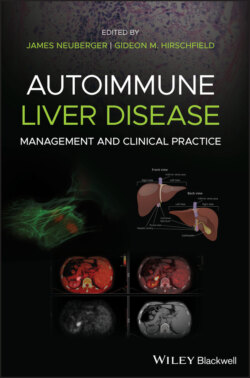Читать книгу Autoimmune Liver Disease - Группа авторов - Страница 16
Key Points
ОглавлениеThe liver is largely composed of hepatocytes and biliary epithelial cells or cholangiocytes; both hepatocytes and intrahepatic cholangiocytes differentiate from bipotent liver progenitors, the hepatoblasts.
The liver has many functions, among which metabolic homeostasis, disposal of endotoxins and xenotoxins, metabolism of bilirubin and urea, and bile formation and secretion are just examples. The liver also produces fundamental circulating proteins and clotting factors and hormones. In addition, the liver receives and processes the blood coming from the intestine and has a fundamental role in innate immunity.
Besides their roles in dietary lipid absorption and cholesterol homeostasis, bile acids (BAs) also play a key role as signaling molecules in the regulation of hepatic metabolism and energy homeostasis.
BAs also have hormonal signaling functions and interact with dedicated receptors such as the nuclear receptor farnesoid X receptor and G protein‐coupled receptors, which regulate BA homeostasis and BA‐induced injury and/or inflammation.
Multiple niches of biliary tree stem/progenitor cells reside in different locations along the human biliary tree and within the liver parenchyma and have a key role in regeneration of the liver.
Cholangiocytes modify the primary bile by secretion of chloride and bicarbonate fluid. This is a major protective mechanism for the biliary tree.
Cholangiocytes, a barrier and secretory epithelium in normal conditions, activate and/or proliferate following a liver insult and give rise to the ductular reaction, a major driver of the progression of hepatic fibrosis.
Cholangiocytes also contribute to the immune response through antigen presentation to immune cells, being a target of immune‐mediated aggression or being the initiators of an inflammatory reaction that then progresses to adaptive immune activation.
